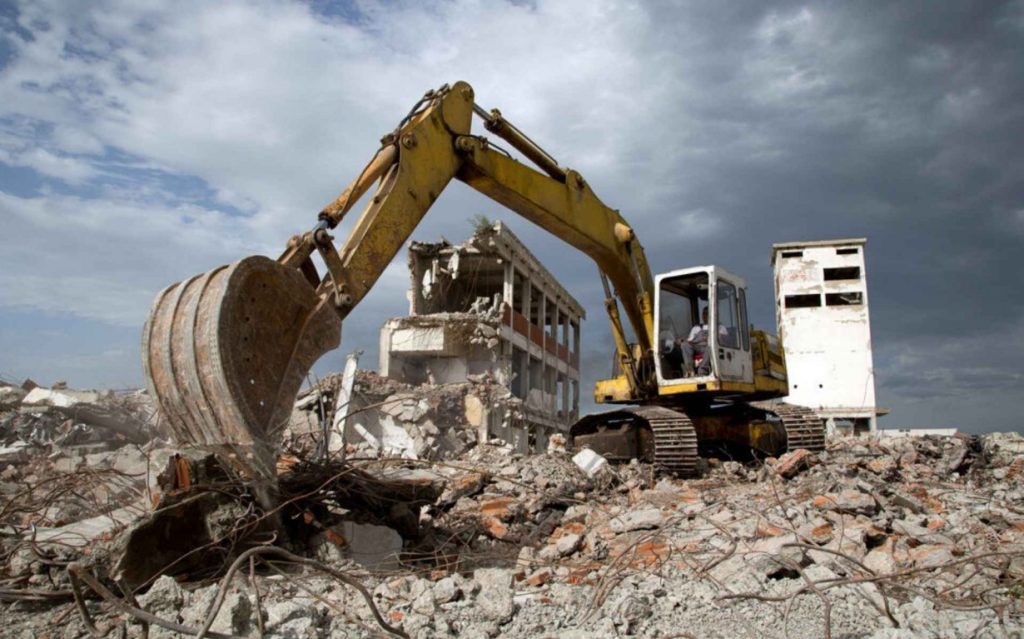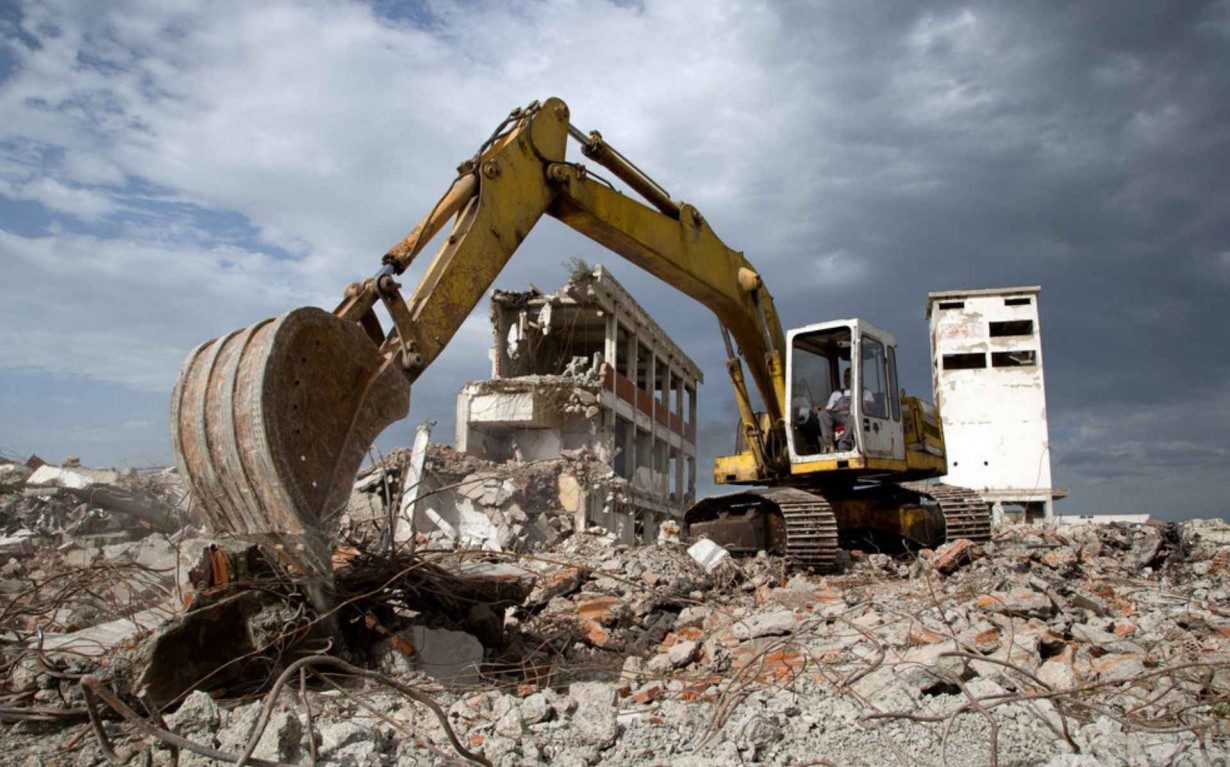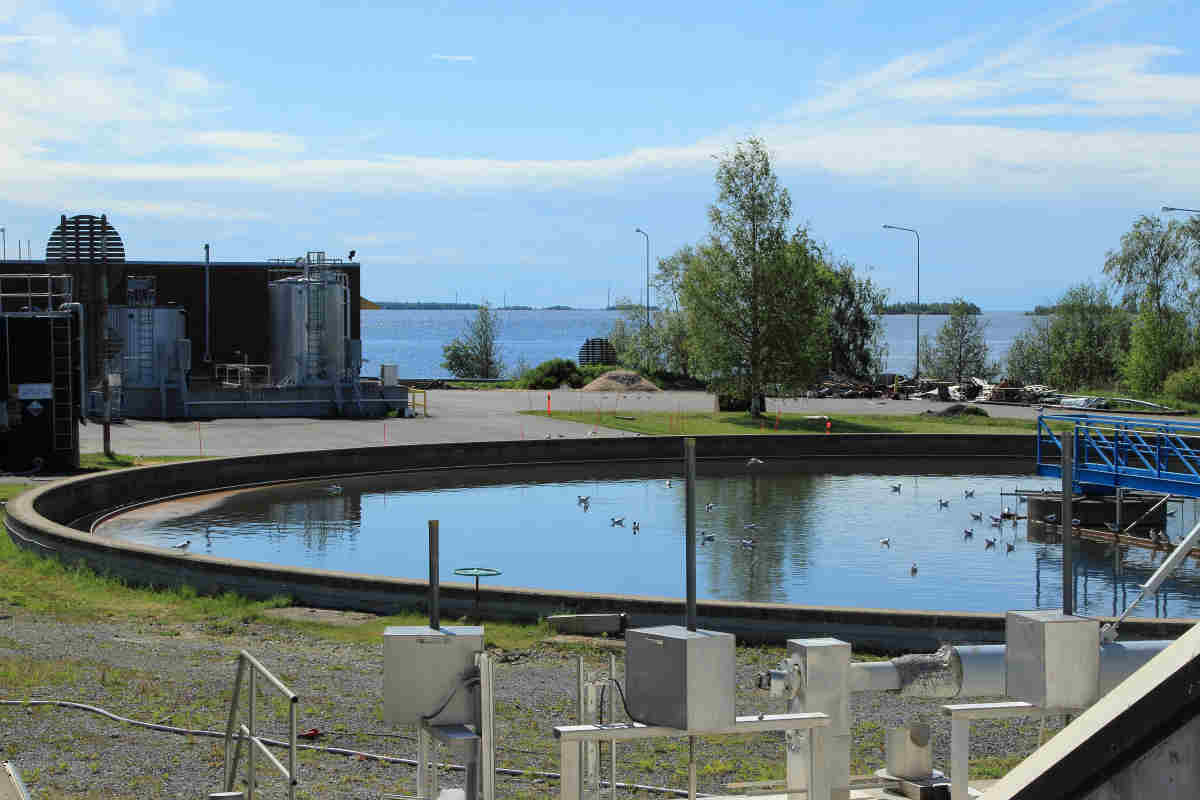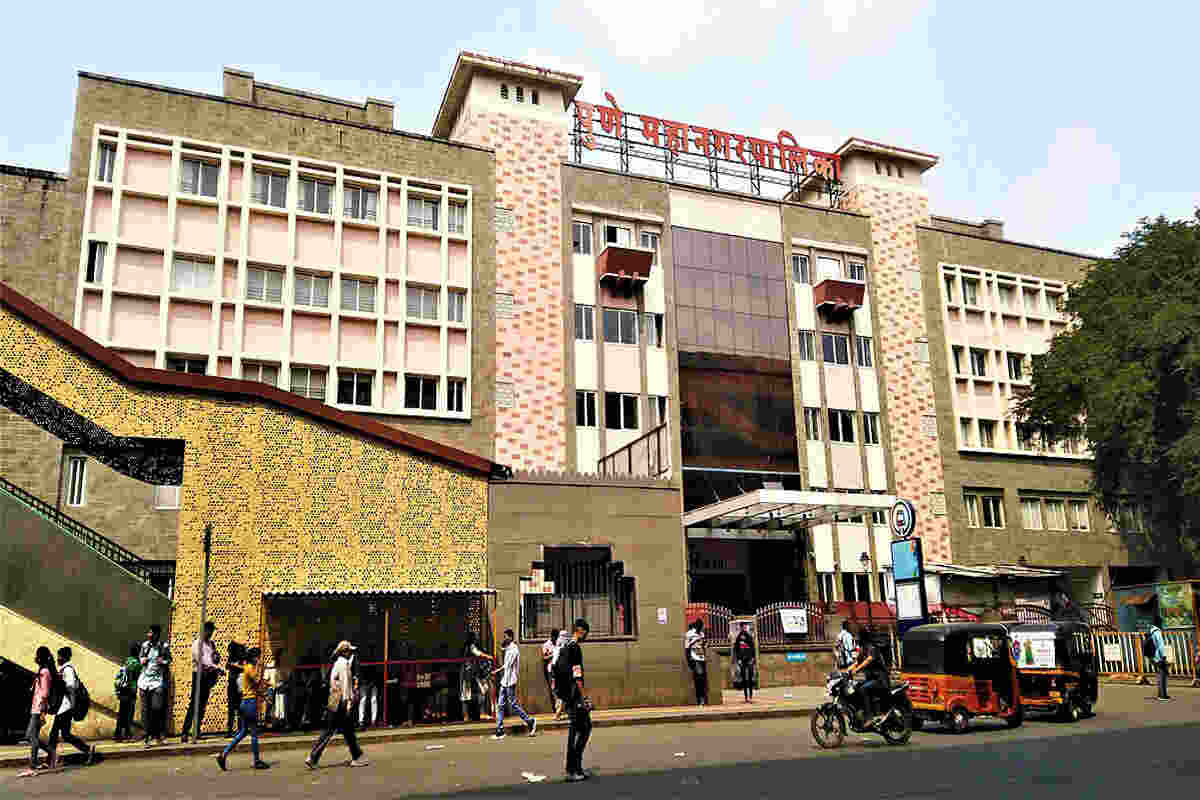
Sustainable Construction Waste Management In India
India is urbanising faster than its urban planners can handle. We are building roads, bridges, fly-overs, factories, commercial complexes and also building and renovating our homes and residential properties (sometimes to upgrade the buildings or to take advantage of higher FSI regulations now allowed in many cities).
But we do not pay sufficient heed to the construction and demolition (C&D) waste we generate, for example, bricks, concrete, stones, hard core subsoil, topsoil, timber, glass, gypsum, ceramics and also plastics. Neglecting this waste has consequences for public health as well as the environment.
There is no agreement on the volume of C&D waste. The Ministry of Environment, Forests and Climate Change in 2010, put the annual estimate of C&D waste at 10-12 million tonnes. The Central Pollution Control Board settled for 12 million tonnes in 2011, but its Guidelines Document of 2017 has upped the estimate to 25-30 million tonnes, based on information from the Ministry of Urban Development.
The Centre for Science and Environment, swung to the other extreme and estimated C&D waste at a humongous 530 million tonnes for 2013, as they include the waste from renovations/repairs, assuming that one-third of the existing stock of buildings carried out renovations/repairs in 2013.
The most recent annual estimate of C&D waste in Indian cities is 165-175 million tonnes, jointly prepared for the period 2005 to 2013, by two government agencies, the Building Materials and Technology Promotion Council, and the Centre for Fly Ash Research and Management. This waste is dumped illegally on vacant sites, on the sides of highways, below fly-overs, beside lakes and rivers, in other low-lying areas and open stormwater drains. Delhi and Bengaluru provide glaring examples of this practice, commonly known as “fly-tipping”. In Bengaluru, C&D waste is increasingly being used to encroach on lake-bed land for construction.
Delhi’s air pollution is in no small measure due to the high presence of particulate matter (PM 2.5 and PM 10), resulting from the construction debris strewn around the city. Waterlogging, with all its adverse impact on public health and the environment, is another consequence as the runoff from smooth surfaces is trapped in the debris.
Other countries have faced similar challenges and have done something about it. Germany faced huge issues in disposing of the post-war bomb rubble. Stuttgart solved this problem by creating a mini-hillock outside the town which is now a recreational hand-gliding spot. While C&D waste was earlier typically sent to dump sites in many countries, in the past 20 years or so there has been a greater appreciation of the reuse and recycling possibilities of the waste into construction material (recycled aggregate concrete, manufactured sand, etc.) and its implication for the conservation of natural resources.
An EU study has calculated that an average of 28 per cent of all C&D waste was recycled in EU countries in the late 1990s. Since then, most EU members have set goals for recycling C&D waste that range from 50 per cent to 90 per cent of their C&D waste production. The UK’s use of recycled aggregates (materials formed from a mass of fragments or particles loosely compacted together) is the highest in Europe and accounts for 25 per cent of all aggregates used in construction. This has created a vibrant recycling industry, which promotes innovation and new products and their uses, while the International Recycling Federation works to harmonise quality standards for recycled materials.
Even in the US which is known for its proliferation of landfills, California, the most progressive state, has promulgated an ordinance which requires 50 per cent recycling of C&D waste and 75 per cent diversion of inerts away from landfills.
Closer home, Singapore was recycling 98 per cent of its construction waste by 2007. Hong Kong has been recycling its waste to produce recycled aggregates (RA) for use in government projects and R&D work. In Taiwan, a comprehensive plan for the management of C&D waste was put in place in 1999 as a response to the challenge posed by the severe earthquake that year, which damaged about 100,000 dwellings.
India’s record, by comparison, is very poor. Until two years ago, C&D waste was not even looked at separately from the municipal solid waste (MSW). The Municipal Solid Waste (Management and Handling) Rules, 2000, merely stated that C&D waste be “separately collected and disposed of in accordance with State laws”.
Only there were hardly any state laws! But in 2016, recognising the importance of growing volumes of C&D waste in urban areas and the significant differences in the origin and quality of this waste and in the methods of its recycling and reuse, the Construction and Demolition Waste Management Rules 2016 were separately notified by the Ministry of Environment, Forests and Climate Change, and the Solid Waste Management Rules (2016) superseded the 2000 Rules. This reflected the growing recognition of the need to manage C&D waste separately from the municipal solid waste.
The presence of C&D waste in the mixed waste reduces the effectiveness of composting or biomethanation and also reduces the calorific value and combustibility of the MSW. The presence of MSW in debris similarly reduces the quality of recycled C&D waste.
While builders and renovators must keep C&D waste unmixed, urban local bodies must ensure that the Rules are enforced. For example, the Rules specify that all government construction projects, at all levels, should utilise between 10 and 20% of C&D recycled products (aggregates, kerb stones, paver blocks, tiles and manufactured sand). This has not happened despite the orders of the National Green Tribunal and other regulatory bodies.
In Delhi itself, which has three C&D waste recycling plants set up by IL&FS Environment, at Burari (2000 TPD capacity), Shastri Park (500 TPD capacity) and Mundka (150 TPD capacity), the government projects have used only 200,000 tonnes of recycled material per annum even as the C&D waste generated has reached 1.5 million tonnes per annum.
The C&D waste recycling industry is in a very nascent stage in India. The challenge is to ensure that C&D waste comes to the recycling plants as segregated input, and the recycled products are picked up for use in construction.
The government has to build awareness of the value of recycled products and also provide standard codes to ensure adherence to quality. The government also has to set an example in its own construction activity by complying with the Rules.
At the same time, the incentives also have to be aligned for the private sector, for example, the imposition of a reasonable charge for disposal at dumpsites can induce builders or owners to divert the C&D waste to recycling plants. An important additional step in this direction would be to reduce GST rates on products using recycled materials.
MORE EXPLAINED
Last but not least, effective management of C&D waste helps in curbing excessive consumption of natural resources and contributes to sustainable development. For example, the demand for sand is expected to more than double between 2010 and 2020. In India, we primarily use river sand for construction.
The Supreme Court has recently warned about the adverse environmental consequences of riparian sand mining. Increasing demand, easy availability and limited government oversight have given rise to a thriving illegal trade in sand. Manufactured sand from C&D waste provides an environmentally sustainable alternative.
Since almost 60 per cent of the stock of buildings projected to be there in 2030 is yet to be built, sustainable construction and effective management of C&D waste assume even greater significance.
The Law in India- Construction & Demolition Waste Management Rules, 2016
The Government of India has notified Construction & Demolition Waste Management Rules, 2016 for the first time. Union Minister of State (Independent Charge) of Environment, Forest and Climate Change, Prakash Javadekar, said that the rules are an initiative to effectively tackle the issues of pollution and waste management.
The Environment Minister highlighted that the local bodies will have to utilize 10-20% material from construction and demolition waste in municipal and government contracts. Cities with a population of more than one million will commission processing and disposal facility within 18 months from the date of final notification of these rules, while cities with a population of 0.5 to 1 million and those with a population of less than 0.5 million will have to provide these facilities within two years and three years respectively.
“Permission for construction will be given only when the complete construction and demolition waste management plan is presented”, he said. The Minister also pointed out that large generators of waste will have to pay relevant charges for collection, transportation, processing, and disposal, as notified by the concerned authorities.
The construction and demolition waste generated is about 530 million tonnes annually. The Ministry of Environment, Forest and Climate Change notified the Construction & Demolition Waste Management Rules, 2016 on 29 March 2016. The rules are an initiative to effectively tackle the issues of pollution and waste management.
Salient features
- Application
- Applies to everyone who generates construction and demolition waste.
- Duties of waste Generators
- Every waste generator shall segregate construction and demolition waste and deposit at collection centre or handover it to the authorised processing facilities
- Shall ensure that there is no littering or deposition so as to prevent obstruction to the traffic or the public or drains.
- Large generators (who generate more than 20 tons or more in one day or 300 tons per project in a month) shall submit waste management plan and get appropriate approvals from the local authority before starting construction or demolition or remodelling work,
- Large generators shall have environment management plan to address the likely environmental issues from construction, demolition, storage, transportation process and disposal / reuse of C & D Waste.
- Large generators shall segregate the waste into four streams such as concrete, soil, steel, wood and plastics, bricks and mortar,
- Large generators shall pay relevant charges for collection, transportation, processing and disposal as notified by the concerned authorities;
- Duties of Service providers and Contractors
- The service providers shall prepare a comprehensive waste management plan for waste generated within their jurisdiction, within six months from the date of notification of these rules,
- Shall remove all construction and demolition waste in consultation with the concerned local authority on their own or through any agency.
- Duties of State Government and Local Authorities
- The Secretary, UDD in the State Government shall prepare their policy with respect to management of construction and demolition of waste within one year from date of final notification of these rules.
- The concerned department in the State Government dealing with land shall provide suitable sites for setting up of the storage, processing and recycling facilities for construction and demolition waste with one-and-a-half years from date of final notification of these rules.
- The Town and Country planning Department shall incorporate the site in the approved land use plan so that there is no disturbance to the processing facility on a long term basis.
- Shall procure and utilize 10-20% materials made from construction and demolition waste in municipal and Government contracts.
- Local Authority shall place appropriate containers for collection of waste, removal at regular intervals, transportation to appropriate sites for processing and disposal.
- LA shall seek detailed plan or undertaking from large generator of construction and demolition waste and sanction the waste management plan;
- Seek assistance from concerned authorities for safe disposal of construction and demolition waste contaminated with industrial hazardous or toxic material or nuclear waste if any;
- LA shall give appropriate incentives to generator for salvaging, processing and or recycling preferably in-situ;
- LA shall establish a data base and update once in a year,
- Million plus cities (based on 2011 census of India), shall commission the processing and disposal facility within one-and-a-half years from date of final notification of these rules
- 0.5 to 1 million cities, shall commission the processing and disposal facility within two years from date of final notification of these rules
- for other cities (< 0.5 million populations), shall commission the processing and disposal facility within three years from date of final notification of these rules
- Duties of Central Pollution Control Board, State Pollution Control Board or Pollution Control Committee
- The Central Pollution Control Board shall prepare operational guidelines related to environmental management of construction and demolition waste.
- SPCB shall grant authorization to construction and demolition waste processing facility
- Monitor the implementation of these rules by the concerned local bodies
- Submit annual report to the Central Pollution Control Board and the State Government.
- Standards for products of construction and demolition waste
- The Bureau of Indian Standards need to prepare code of practices and standards for products of construction and demolition waste
- Indian Roads Congress need to prepare standards and practices pertaining to products of construction and demolition waste in roads construction.
- Duties of Central Ministries
- The Ministry of Urban Development, and the Ministry of Rural Development, Ministry of Panchayat Raj, shall facilitate local bodies in compliance of these rules;
- The Ministry of Environment, Forest and Climate Change shall review implementation of these rules as and when required.
- Facility for processing / recycling facility
- The operator of the facility shall obtain authorization from State Pollution Control Board or Pollution Control Committee.
- The processing / recycling site shall be away from habitation clusters, forest areas, water bodies, monuments, National Parks, Wetlands and places of important cultural, historical or religious interest.
- The processing/recycling facility exceeding five Tones per day capacity, shall maintain a buffer zone of no development around the facility.
IMPLICATIONS OF THE RULES
| SI.NO | CONSTRUCTION AND DEMOLITION WASTE MANAGEMENT RULES, 2016 | LIKELY IMPLICATIONS |
|---|---|---|
| Application | ||
| 1 | The rules shall apply to every one who generates construction and demolition waste such as building materials, debris, rubble waste resulting from construction, re-modelling, repair and demolition of any civil structure of individual or organisation or authority. | This will address the indiscriminate disposal of C& D Waste and enable channelization of the waste for reuse and recycling in gainful manner |
| Responsibility of Waste Generators | ||
| 2 | Every waste generator shall be responsible for collection, segregation of concrete, soil and others and storage of construction and demolition waste generated separately, deposit at collection centre so made by the local body or handover it to the authorised processing facilities, ensure that there is no littering or deposition so as to prevent obstruction to the traffic or the public or drains.Waste generators who generate more than 20 tons or more in one day or 300 tons per project in a month shall submit waste management plan and get appropriate approvals from the local authority before starting construction or demolition or remodelling work, segregate the waste into four streams such as concrete, soil, steel, wood and plastics, bricks and mortar, keep the concerned authorities informed regarding the relevant activities from the planning stage to the implementation stage and this should be on project to project basis.Waste generators shall pay relevant charges for collection, transaction, processing and disposal as notified by the concerned authorities; | Duties of waste generators, service providers would envisage people’s participation (Jan Bhagidari) in scientific management of C & D wasteSegregation and channelizing the C & D waste will improve the other waste utilisation and management namely organic waste for composting, high calorific waste to energy recovery etc.This will ensure Sustainability of Waste Management System for C&D Waste |
| Responsibility of service providers | ||
| 3 | The service providers shall prepare within six months from the date of notification of these rules, a comprehensive waste management plan covering segregation, storage, collection, reuse, recycling transportation and disposal of construction and demolition waste generated within their jurisdiction.The service providers shall remove all construction and demolition waste in consultation with the concerned local authority on their own or through any agency. | The provision have been introduced on line of concept of Extended Producers Responsibility. Here, the waste generator (Service provider) has been made responsible for waste generated by them in the public places to authorized C&D waste recycling facilities. |
| Responsibility of Local Authority | ||
| 4 | Local Authority shall be responsible for proper management of construction and demolition waste within its jurisdiction including placing appropriate containers for collection of waste, removal at regular intervals, transportation to appropriate sites for processing and disposal.LA shall seek detailed plan or undertaking as applicable, from generator of construction and demolition waste and sanction the waste management plan; seek assistance from concerned authorities for safe disposal of construction and demolition waste contaminated with industrial hazardous or toxic material or nuclear waste if any;LA shall give appropriate incentives to generator for salvaging, processing and or recycling preferably in-situ;LA shall establish a data base and update once in a year, device appropriate measures in consultation with expert institutions for management of construction and demolition waste generated including processing facility and for using the recycled products in the best possible manner | This has been introduced to seek special attention of local bodies/ agencies responsible for waste management in the States.These provisions will put in place the Institutional framework for C& D waste management and also strengthen system for waste management wherever they exist in the country. |
| Processing and recycling facility for C & D waste | ||
| 5 | The operator of the facility shall apply in Form I for authorization from State Pollution Control Board or Pollution Control Committee.The processing / recycling site shall be away from habitation clusters, forest areas, water bodies, monuments, National Parks, Wetlands and places of important cultural, historical or religious interestA buffer zone of no development shall be maintained around solid waste processing and disposal facility, exceeding five Tones per day of installed capacity. | This will prevent indiscriminate disposal and ensure scientific conversion C&D waste in to useful raw material for buildings/ construction. |
| Duties of state Government or Union Territory Administration | ||
| 6 | The Secretary in-charge of development in the State Government or Union territory administration shall prepare their policy with respect to management of construction and demolition of waste within one year from date of final notification of these rules.The concerned department in the State Government dealing with land shall be responsible for providing suitable sites for setting up of the storage, processing and recycling facilities for construction and demolition waste.The Town and Country planning Department shall incorporate the site in the approved land use plan so that there is no disturbance to the processing facility on a long term basis.Procurement of materials made from construction and demolition waste shall be made mandatory to a certain percentage (say 10-20%) in municipal and Government contracts subject to strict quality control. | At present the infrastructure for C&D waste Management is either not available or wherever it is available is inadequate or not operating efficiently.The provisions envisages administrative and other logistic supports from the State Governments to the entrepreneurs interested in the C&D Waste Management Sectors |
| Duties of the SPCB / PCC | ||
| 7 | State Pollution Control Board or Pollution Control Committee shall grant authorization to construction and demolition waste processing facility and monitor the implementation of these rules by the concerned local bodies and the competent authorities and the annual report shall be sent to the Central Pollution Control Board and the State Government or Union Territory or any other State level nodal agency identified by the State Government or Union Territory administration for generating State level comprehensive data. | This is to ensure environmentally sound management of C& D waste. While granting the authorization, the SPCB would assess and ensure the availability and adequacy of infrastructure with C&D facilities to meet the prescribed environmental norms.It would also help in getting the authentic data on quantum of C & D waste generation and country’s recycling capacity in due course of time |
| Duties of the Central Pollution Control Board | ||
| 8 | The Central Pollution Control Board shall prepare operational guidelines related to environmental management of construction and demolition waste. | This is to provide technical support to local bodies, waste recyclers and other stakeholders. |
| Duties of Bureau of Indian Standards and Indian Roads Congress | ||
| 9 | The Bureau of Indian Standards need to prepare code of practices and standards for use of recycled materials and products of construction and demolition waste in respect of construction activities.Indian Roads Congress shall be responsible to the standards and practices pertaining to use of recycled materials and products of construction and demolition waste in roads construction. | This is to ensure building materials made out of C&D Waste do not jeopardize the structural safety and life.Further to ensure the authenticity of products made from the C&D waste and create confidence among the stakeholders on the utilization of such products. |
| Duties of the Central Government | ||
| 10 | The Ministry of Urban Development, and the Ministry of Rural Development Ministry & Panchayat Raj, shall be responsible for facilitating local bodies in compliance of these rules;The Ministry of Environment, Forest and Climate Change shall be responsible for reviewing implementation of these rules as and when required. | Envisage the technical and financial support to the State Agencies from the Central Government for implementation of these Rules and modification of rules according to the requirement in future |
| Timeframe for implementation of the provisions of these rules | ||
| 11 | a. one year and six months from the date of its notification for million plus cities based on 2011 census of India;b. two years from the date of its notification for 0.5 to 1 million cities based on 2011 census of India;c. three years from the date of its notification for other cities (<0.5 million populations) based on 2011 census of India | It would ensure the State Government and local authorities to plan and execute the required waste management system so as to achieve the objective of the rules.The rules envisage access to C&D waste management facilities within two years and overall these rules would support the Clean India Mission of the Government (Swachh Bharat Abhiyan). |
-Sources: Indian Express Isher Judge Ahluwalia, Almitra Patel. Ministry of Environment, Forest and Climate Change.



